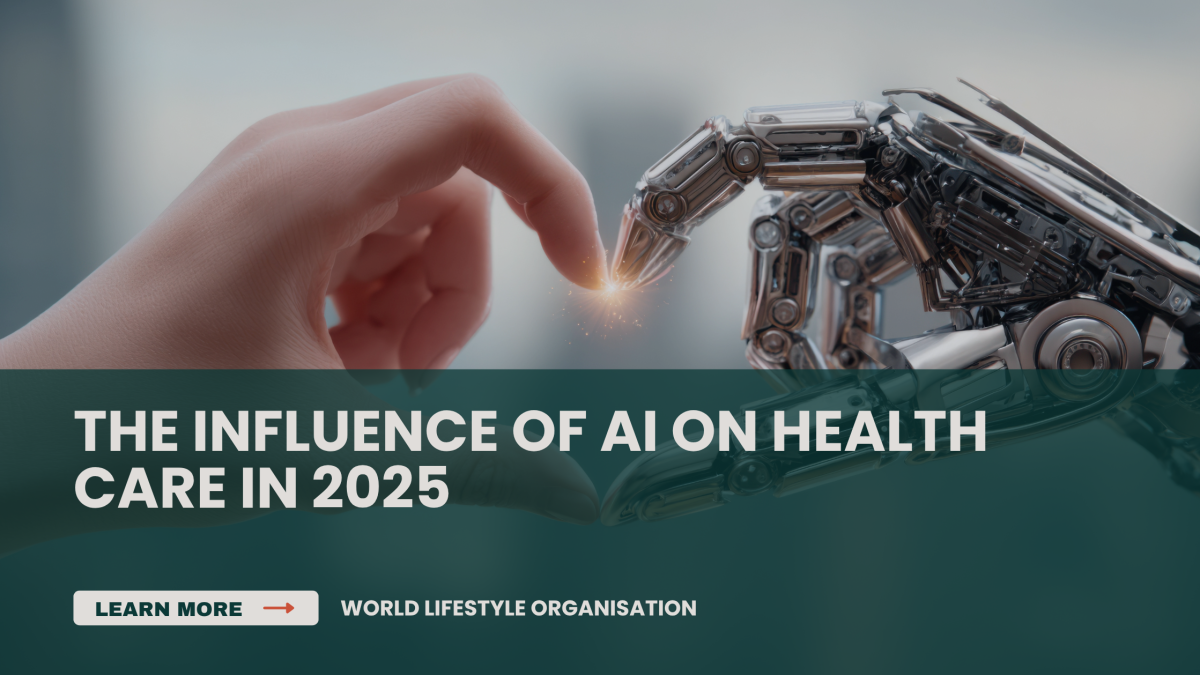The influence of AI on health care in 2025

Explore how artificial intelligence (AI) is shaping health care in 2025.
Explore how artificial intelligence (AI) is shaping health care in 2025 — from diagnosis and workflows to equity and regulation. We highlight the major trends, the public-health implications of AI, and practical steps individuals and systems can take.
Key Facts
- A 2025 survey found that 85 % of health-care leaders say their organisations have already adopted, or are exploring, generative AI (GenAI) solutions. McKinsey & Company
- In a global survey of over 1,900 health-care professionals and 16,000 patients, professionals were more confident than patients in AI-driven care — highlighting a gap in trust. Philips
- According to a 2025 report, ambient listening (voice recognition) and machine-vision tools are among the first widely adopted AI use-cases in health-care settings. Zorgtechnologie Oplossingen+1
What is artificial intelligence doing in health care today?
What we call AI in health-care means a broad set of technologies: machine learning, generative AI, large-language models (LLMs), computer vision, remote-monitoring systems and more. In 2025, the influence of these tools in health-care is accelerating. For example, a BCG report describes how AI is expanding from telemedicine to precision diagnostics and workflow automation. BCG
How is AI transforming patient care and health systems?
How does this shift matter for lifestyle, prevention and public-health? Key dimensions include:
- Personalised medicine & monitoring: AI is being used to integrate genomics, wearable-data, lifestyle information and real-time monitoring to tailor care to the individual. BCG
- Operational efficiency: AI-powered tools such as ambient listening (recording & transcribing consultations) and machine-vision sensors are helping reduce administrative load and free up clinicians’ time. Zorgtechnologie Oplossingen
- Access and equity: Reports emphasise that AI must help bridge, not widen, health-care gaps. One key message: “Equity must remain at the forefront of AI initiatives in health”. World Economic Forum Reports
- Workforce & professional roles: A systematic review noted that health professionals perceive both opportunities and significant barriers (at individual, institutional and policy-levels) in implementing AI. BioMed Central
What are the major challenges and what does this mean for public-health?
Why this matters for our collective mission at the World Lifestyle Organisation (WLO):
- Trust and usability: Patients often have lower confidence in AI than providers do, which may hamper uptake and adherence. Philips
- Data governance, bias and regulation: AI models can reproduce inequities unless designed carefully, and existing regulatory-frameworks may not yet match the pace of innovation. arXiv+1
- Workforce implications: Automation may reduce burden but also raises questions about maintaining human expertise and vigilance.
- Lifestyle-focus and prevention: While AI can optimise clinical care, it must also support the upstream work of lifestyle improvement (e.g., promotion of physical activity, healthy diets, prevention). If AI supports only reactive care, the prevention agenda may be neglected.
- Systemic barriers: Access to digital infrastructure, data literacy, and equitable deployment matter deeply if AI is to benefit all.
What can individuals and systems do now?
If you are an individual, or part of a health-system, here are practical steps:
- For the individual: Ask your provider whether AI-tools are used in your care—understanding how your data is used, and how you can benefit. Be alert to issues of consent, data sharing, and transparency.
- For systems: Develop clear governance frameworks for AI adoption (ethics, bias-checks, ongoing evaluation). Prioritise equity, designing for underserved populations.
- For lifestyle & prevention advocates: Encourage use of AI not just for disease treatment but for upstream behaviour-support—e.g., tools that monitor lifestyle patterns, send personalised nudges, integrate with community health programmes.
- For everyone: Stay informed. As AI evolves, so do the implications for how care is delivered and how you interact with the health-system.
Conclusion: Why this matters for WLO’s mission
At the World Lifestyle Organisation, we see that lifestyle and health-care are intimately linked. The adoption of AI in health-care offers a unique opportunity: to enhance prevention, personalise interventions, relieve burden on systems and support healthier lives. But it also carries risk of deepening inequalities, eroding trust and narrowing focus to high-tech rather than high-touch. By approaching AI through the lens of public-health, equity and lifestyle support, we can help ensure that this technology benefits everyone.
👉 If you would like to stay updated on how AI, lifestyle and health-care intersect — and receive practical tips for health ownership in a digital age — subscribe to our WLO newsletter today.
Categories: : Worldwide Health
 Dylan | World Lifestyle Organisation
Dylan | World Lifestyle Organisation 